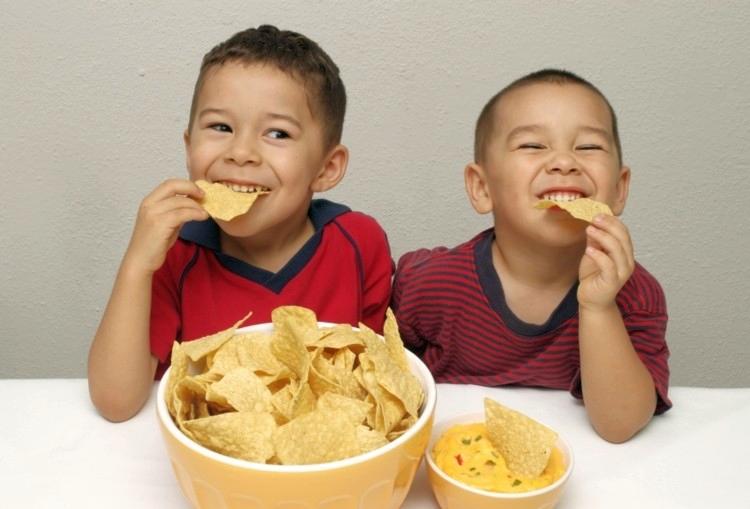By Dr. Kristen Copeland

I realized the need for a research study as I was picking up my youngest daughter from child care. She was three years old at the time, and like many her age, a very picky eater. As a conversation starter, I asked her what she would like for dinner. She promptly quipped, “I don’t want dinner. I want a snack!”

It was that very statement, from a three-year-old, that made me realize there might be a problem. Why would she want a snack instead of dinner? And then I thought about the types of things she ate for snacks in child care—goldfish, pretzels, juice—and the types of nutritious things she was served at meals (but never ate) – meat and green vegetables. From the viewpoint of a three-year-old, I could see why she might want to forgo a dinner, which was likely to be full of “yucky” nutritious foods, in lieu of a meal of snack foods, which were unlikely to be nutritious but very likely to be appetizing. And then I started to wonder how her caregivers in child-care (and her parents at home) might be training her to prefer snacks over meals, just by serving tasty foods at snack times and saving the nutritious foods for mealtimes. So, as a mom and a researcher, I set out to better understand what our kids were being served at meals versus snacks in child care, and how big of a problem this might be.

In order to do this, we surveyed 258 full-day licensed child-care centers in Southwestern Ohio about their lunch and snack menus, and unfortunately we found that my daughter’s experience was not unique. We found that 87 percent of the centers served sweet and salty foods— gummy snacks, pretzels, and crackers—at snack time more than three times per week, but rarely at lunch. Similarly, 100% fruit juice was on snack menus over two times per week in 37 percent of centers, but in only one center as a regular component of lunch. Conversely, those dreaded but very nutritious non-starchy vegetables were on lunch menus over three times per week in 67 percent of centers, but rarely on snack menus in most centers. (Non-starchy vegetables include carrots, squash, sweet potatoes, broccoli, and dark greens. “Starchy” vegetables are generally less nutritious than non-starchy vegetables but very popular with preschoolers: corn, green peas, and white potatoes.)
In essence we found a big difference between the nutritional value of foods and beverages served at meals versus snack time. Foods served at meals were rich with nutrients but those at snack time were not.

In theory, there is no reason for snacks to look different from meals in child care. Snacks are generally smaller and provide fewer calories than meals, but collectively snacks comprise 26 percent of preschooler’s daily caloric intake. Practically, they may differ because meals are usually prepared in a child care facility’s kitchen or through a catering service, but kitchen prep/catering services are not available at snack times. Snacks therefore must be non-perishable items that require no special preparation or handling; in other words, open and serve. According to the USDA’s Child and Adult Care Food Program (CACFP) which operates in most local child-care centers and family child care homes, snacks only have to contain two of the four recommended food groups, while meals must contain all four (fruit/vegetable, milk, meat, and grain). In our study we found the most typical pairing at snack time to be a fruit and grain, usually juice and crackers.

It seems reasonable that if children are going to get over a quarter of their daily energy from snacks, these “mini-meals” could also provide a similar proportion of their nutrients. Our findings suggest this is not happening. With 75 percent of kids ages 3-5 in child care, improving snacks in these settings could help address the growing obesity problem. At minimum, snacks are a missed opportunity for improving child health and nutrition.

So, what can be done? Meals and snacks served in child care must meet state licensing standards for food safety. Most states have minimum or no nutrient standards for the foods and beverages served, however. Yet individual facilities can choose to offer more nutritious foods and beverages. All it takes is some advocacy. Child-care facilities want parent involvement and feedback. If you as a parent want or demand something, they will try to adapt. In the end, child care facilities are businesses, and you and your children are their customers. Ask to speak to the parent advisory committee. Or start a parent advisory committee if your center does not have one. Speak with the director and administrative staff about your concerns. Suggest the following tips for healthier snacking:

- Offer whole fruit instead of juice
- Offer water or skim milk instead of juice or 2% milk
- Offer lean protein at snacks, such as yogurt, eggs, beans, peanut butter or lean meat
- Offer whole grains and vegetables at snacks
- For celebrations, choose either non-food activities, or require that nutritious foods such as fresh fruits be served. Consider a ‘sundae’ made of fresh raspberries and light cream.

Preschoolers in child care are at the perfect age to develop healthy eating habits that can last them a lifetime. And they’re already in the right environment to learn. Why not take the opportunity to teach them about healthy snacking in addition to their A-B-Cs and 1-2-3s?
The information contained in this article is for educational and informational purposes only and is not intended as health or medical advice. Always consult a physician or other qualified health provider regarding any questions you may have about a medical condition or health objectives.





